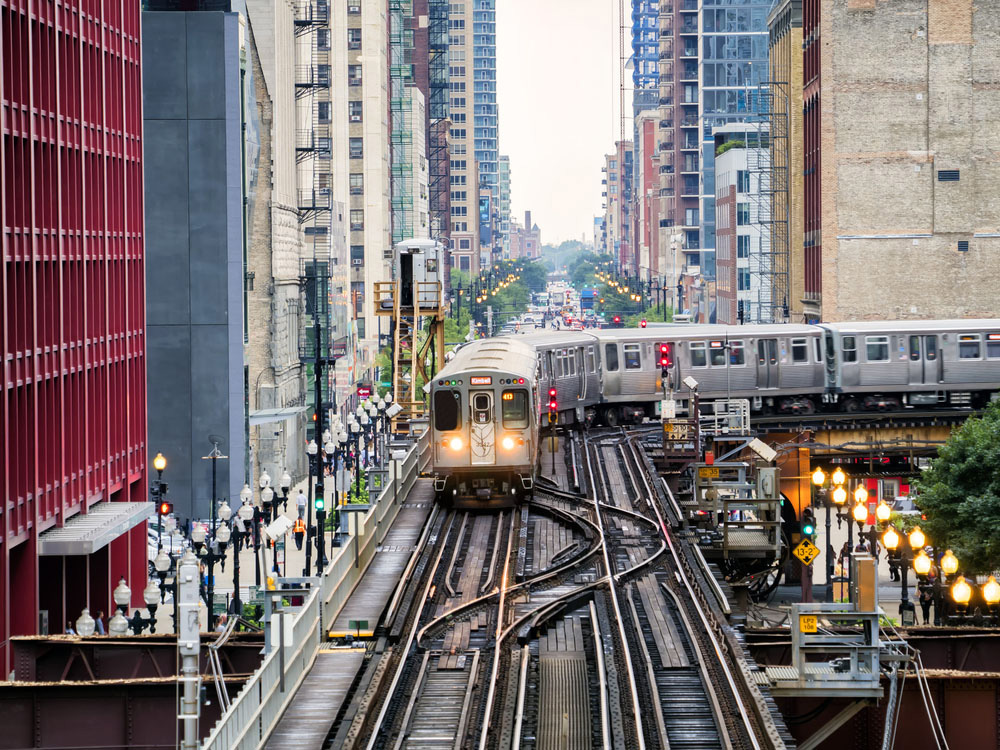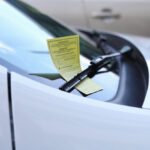

August 9, 2023
Do you need a car in Chicago?
Whether you’re a new Chicago resident or just visiting for a weekend, you’ll need to find ways to navigate the streets quickly and with ease. You might be questioning whether using a car in a big city is a worthwhile option. On the one hand, there are plenty of benefits of driving a private car in Chicago, but there are also an estimated 1.05 million cars on the road in the greater metropolitan area.
We’ll help you weigh your options — and there are plenty of them! One of the nice things about Chicago being a major American city is that there are plenty of options for getting around.

5 things to know about getting around in Chicago
Navigating the city of Chicago is no small feat. Spanning more than 228 square miles, the Windy City and its suburbs offer plenty to do and see. Getting around town often requires knowledge of public transit schedules, intersections and which times of day are good for driving.
As you plan your experience in Chicago and its surrounding cities, consider the following five things you must know about traveling around the city.
1. The main ways to get around Chicago
Do you need a car in Chicago? In some cities, like Miami and Los Angeles, owning a car or renting for the duration of your stay is a necessity. But in this case, you have the benefit of multiple options for getting from one destination to another. Sometimes a car is required, but other times the “L” might be your most efficient option. If you’re living in or planning a visit to Chicago, consider these alternative means of transportation.
Walking
Walking is great exercise and an excellent way to familiarize yourself with the city’s streets and discover gems that are easy to pass over when you take other forms of transportation. Downtown Chicago is highly walkable, and its numerous neighborhoods are well-connected with the “L” and Metra rail systems. If you’re staying in a hotel downtown — like one of many along the city’s Magnificent Mile — you’re within convenient walking distance of many museums, parks, landmarks and other must-visit destinations.
That same walkability extends to Chicago’s parks, walking trails and beaches. Websites like real estate resource Redfin and Walkscore.com laud the city for its high degree of walkable appeal. Specific neighborhoods, like Lincoln Park, the West Loop and River North, rank high for walkability, too.

Public transportation
If you’re tired of trekking to your destination on foot, try public transportation. Chicago is well known for its public transit system. The Chicago Transit Authority (CTA) operates a network of trains and buses to move the city’s 2.6 million residents from one place to another. The centerpiece of the transit network is the city’s mostly elevated rail system, the “L.”
Each of the L’s lines connects different parts of the city. For example, the Red Line runs from Howard in the north to 95th/Dan Ryan far south of the Loop and provides service 24 hours a day. The Blue Line serves passengers who need to travel between Chicago O’Hare International Airport and the Forest Park station, via the Loop. If you prefer flying into or out of Midway International Airport, the Orange Line is your ticket.
In addition to trains, Chicago’s hundreds of buses ferry passengers across town along varying routes. While buses do not run 24 hours daily, a timetable is available to help plan your trip.
Rideshares
If you can’t or don’t want to wait for public transit, using rideshares and taxis is another way to get to and from your destination. Companies like Lyft and Uber allow you to schedule pickups no matter your destination. You can often choose the type of vehicle and service you’d like. However, keep in mind that this can get expensive very quickly, especially when surge pricing comes into play during times of increased demand.

Bikes and scooters
Biking is always an option for those who prefer a pace faster than walking but still want to enjoy the breeze as they move through the city. Whether taking your bike out for a spin or renting one through a bike-share program, the city offers hundreds of miles of on-street bikeways and off-street trails.
Shared scooter rentals are an increasingly popular mode of transportation, too. Electric scooter rental allows you to zoom to your destination, and is available from 5 a.m. to midnight. Always remember to follow the rules for riding them, such as wearing a helmet, not riding on sidewalks and observing speed limits and age requirements.
Car sharing
Public transit, rideshares, biking and walking are great for moving within the city, but sometimes driving yourself is the best way to get around.
But what if you don’t have your own vehicle and need one? Avail car sharing in Chicago offers plenty of options in a neighborhood near you. Take a short day trip around town or to Lake Michigan’s beaches and drive back to the Avail lot to return your shared vehicle once you’re done with it.
If you’ve never heard of it, you probably have questions about how car sharing works. You can think of it like renting a car, but it’s slightly different. Instead of renting the vehicle from a large company, you borrow the vehicle from a local owner, putting money back into the community. Avail facilitates the process so that you get a clean, safe car from a secure self-service lot. That means you don’t have to worry about an awkward meetup or wasting time waiting in line. The whole experience is completely contactless.
In many cases, car sharing is more affordable and convenient than traditional car rental. That’s because there isn’t pressure to purchase add-ons and you get to choose the type of vehicle you want at a convenient location near you. You also don’t have to take time at the lot — just grab the keys and get on your way!
2. Chicago is a bustling city
Like many large cities, Chicago can have heavy traffic, which can be especially difficult to navigate during morning and evening rush hours. That difficulty can extend to public transportation, especially buses (which must share roadways with other vehicles). Even walkers can find themselves dealing with sidewalk congestion. For these reasons, you may want to hit the road in the late morning or early afternoon.
Unlike in smaller suburbs and rural areas, you may not be able to leave “right on time” to reach your destination. Always give yourself extra time and remember that careful planning can help avoid headaches during your commute.
3. Public transportation can be unreliable
Even though public transportation can be a great way to get around on a leisurely day, Chicago’s much-vaunted system isn’t without hiccups. Sometimes trains may not run due to staffing shortages, construction or unpredictable weather. Even the CTA’s tracker is sometimes unreliable.
If you’re running late for an important business meeting or to catch up with friends, that can really put a damper on your plans (and affect your professional or social reputation). In situations like these, you may want alternate means of transportation.

4. Driving is a must to get out of the city
If you want to escape the confines of the city for the day or the weekend, driving is one of the best ways to do it. While traffic in the downtown Loop can be heavy, the roads leading away from the city offer more manageable traffic — at the right times of the day. Taking road trips from Chicago can be your ticket out of the hustle and bustle.
Major arteries to reach the suburbs and surrounding areas include I-90/94, I-55 and I-290. For those who want a more scenic route, the Chicago Skyway and Lake Shore Drive offer great views, but at the expense of a potentially longer commute.
5. Parking is not cheap
One of the major factors that often complicates having a car in Chicago — especially near downtown — is parking. It can be hard to find and extremely expensive in some neighborhoods. Street parking in Chicago can cost as much as $7 an hour at some meters. That doesn’t even factor in the winter parking bans, street cleaning schedules and residential permitting that governs most parking areas.
It’s not just the downtown Loop where parking can feel like a nightmare. Some neighborhoods impose parking restrictions during specific times of the year, such as baseball season in Wrigleyville and Bridgeport. You’re often better off parking your car farther away and walking to your destination. Downloading a Chicago parking app can help you find available parking near you.
City parking is only one of many expenses that you should calculate when considering the cost of car ownership in Chicago.
Navigating Chicago
Chicago’s a big, bustling city with no shortage of ways to get around, but knowing when — and how — to use each one makes a big difference between feeling like a temporary tourist and a seasoned local. Whether biking, walking, hailing a rideshare or using a convenient car sharing service like Avail, you need to know the ins and outs of driving in Chicago traffic before you take to the streets.
If owning a vehicle or driving your own sounds daunting, car sharing can be a convenient alternative. When you reserve a vehicle in Chicago with Avail, you can expect a clean, modern car that will help you get to your day trip destinations with ease.
Driving in Chicago FAQs
FAQ
Borrow & share
Avail makes it simple to borrow a car when you need one, or share your car with others and earn money.





